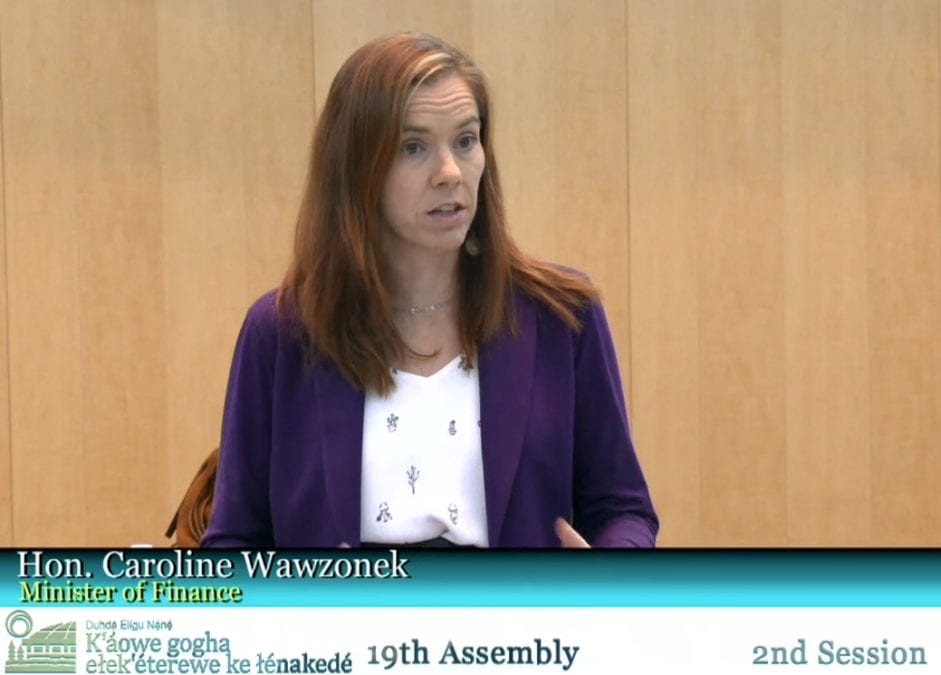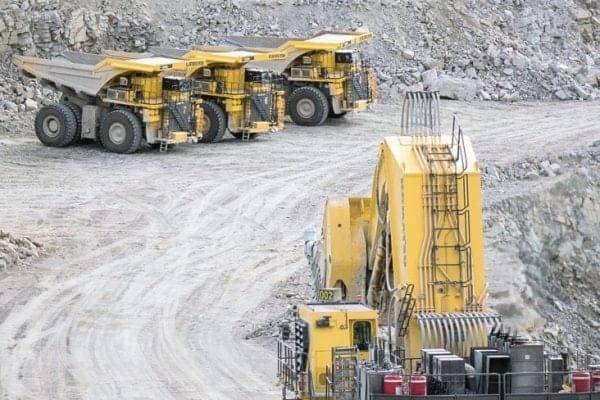The economic outlook for the NWT economy is forecast to be the weakest among the three territories into 2021, according to a recent report from the Conference Board of Canada.
The Impact of COVID-19 on Canada’s Territorial Economies analyzes mining, tourism and construction in the NWT, Nunavut and Yukon and offers a range of scenario-based forecasts into 2022.

GNWT image
GDP outlook
The pandemic has negatively affected tourism in all three territories, although the large contribution of the public sector to gross domestic product (GDP) in the territories has partly shielded the economies from the downturn in the private sector, the latest report states.
In its baseline scenario, the conference board expects real GDP in the NWT to contract 7.6 per cent in 2020 due mainly to the "lost year" for the tourism sector and weaknesses in the mining sector. The board forecasts GDP will rebound by only 4.6 per cent in 2021.
Even before Covid, real GDP was forecast to drop in the NWT in the medium term because of a weaker global diamond industry and the territory's diamond production likely having passed its peak.
Although Dominion Diamond Mines said on Dec. 7 that it could resume operations at Ekati by the end of January 2021, the restart won't be enough to avoid the slump in the mining sector.
In the board's optimistic scenario, real GDP in the territory will contract in 2020 by 6.8 per cent, with a rebound of 4.9 per cent in 2021. Ekati's shutdown would be a major part of the pull back in mining.
However, on a positive note, stronger performances in such sectors as wholesale and retail trade would be possible because of more optimistic consumers.
In the board's "very pessimistic" scenario, real GDP in the NWT would shrink 8.7 per cent in 2020 and rise by just 0.5 per cent in 2021.
"A muted tourism sector, combined with little help from the territory’s mining industry, imply a dire economic outlook for the NWT in that scenario," the report said.
NWT sits in a mix of scenarios
The NWT is currently facing a mixture of the scenarios, said Finance Minister Caroline Wawzonek, with the territory spared the widespread closures of businesses occurring elsewhere in Canada.
"While that keeps us perhaps in the optimistic scenario, what that does to the overall Canadian economy, that does impact us. So it's going to be difficult," she said. "Overall, I don't think we're in the very pessimistic scenario and I don't think we'll necessarily stay entirely in the optimistic. That'll depend on what happens in the rest of Canada. But right now, vaccine-wise and business closures-wise we're sitting in optimistic."
Employment
Labour market forecasts are more positive than those of real GDP, since the mining sector contributes more to territorial GDP than employment. However, the pandemic-related shutdowns of non-essential businesses in 2020 still resulted in job losses.
Wawzonek said in October that the NWT lost 4,000 jobs in 2020 because of Covid, although most of those losses were among non-residents.
Under the report's baseline scenario, jobs in commercial services, which includes tourism-related industries like accommodations and food services, will contract 24.7 per cent.
In the economy as a whole in the baseline scenario, employment will contract 3.4 per cent in 2020 – the equivalent of about 730 jobs – and rebound by 3.8 per cent in 2021.
In the positive scenario, the job rate will drop 2.6 per cent in 2020 and come back stronger at 4.2 per cent in 2021 "as border reopenings and pent-up demand for travel allow jobs in the... tourism sector to expand at a quicker pace than our baseline scenario."
In the very pessimistic view, employment in the territory declines by 3.8 per cent in 2020 and comes back by only 0.9 per cent in 2021 as travel activity remains minimal in the short term.
Tourism
Despite some successes with the NWT's staycation model of tourism, such as Jackpine Paddle and Blachford Lake Lodge, the sector has been hit hard.
A September survey from Spectacular NWT found that of 94 tourism operators in the NWT, 57 per cent had laid off employees and three-quarters saw revenues fall by more than half in the first eight months of 2020, compared to 2019.
The exceptions to that trend were some accommodations businesses that received about $2.7 million through the four isolation hubs in Yellowknife, Fort Smith, Hay River and Inuvik.
Even in the optimistic scenario, the report forecasts domestic borders opening no sooner than mid-2021. Border closures have been a major factor in the decline of tourism.
In the accommodation and food segments of the tourism sector, 2020 GDP is expected to fall by about half of the 2019 level.
The optimistic forecast sees a return to 2019 levels no sooner than 2023, although pent up demand for tourism could produce a spike in late 2021. The very pessimistic scenario sees no bounce back until after 2024.
Wawzonek said few of the report's analyses on tourism were surprising, but its scenarios at least give people in the sector a sense of a "roadmap" of how things might play out.
Mining
Mining in the NWT is in better shape than tourism, though the territory's declining returns in the diamond industry were worsened by the suspension of the Ekati mine in March.

photo courtesy of Dominion Diamond Mines
In addition to the shutdown at Ekati, production at De Beers' Gahcho Kué mine fell by 11 per cent in the second quarter due to reduced personnel, travel restrictions and modified operating procedures aimed at limiting the spread of Covid.
Indigenous companies that service and supply the mining sector faced setbacks because of the pandemic, with mine operators cancelling smaller capital projects that Indigenous companies typically took on.
The pandemic has highlighted the need for more skills development to reduce reliance on fly-in fly-out (FIFO) workers in various sectors, including mining, according to the conference board.
"Investments in innovative skills development initiatives that target the occupations most often filled by FIFO workers would have long-term benefits. More programs to attract skilled immigrants and inter-provincial migrants in those occupations to move permanently to the territories would likewise reduce the need to bring in out-of-territory FIFO workers while increasing the local tax base," the report said.
Wawzonek pointed out that that comment resonated with her and was something she heard during her online budget dialogues in the summer.
Overall, the Conference Board report forecasts the decline of mining to continue even if Ekati resumes production in 2021.
Its very pessimistic scenario sees local employment in the sector down to only 1,000 workers by 2024.
Wawzonek was neutral on the latter scenario, saying that "it's not inaccurate to be more cautious in that regard."
Tom Hoefer, executive director of the NWT & Nunavut Chamber of Mines, acknowledges the report's "bleak" assessment, yet he's optimistic the Covid recovery will bring an opportunity to rejuvenate the mining sector.
He hopes governments can work with the Chamber to incent exploration activities, such as the Dec. 2 announcement by the GNWT of an additional $100,000 for four exploration projects; to help find efficiencies in the regulatory process; to work out a critical minerals strategy; and to provide infrastructure to reduce costs.
Construction
Larger construction contractors were affected more than small ones, the report said, with the smaller firms able to pick up more projects in the summer compared to the spring.
The pandemic hasn't slowed down the housing sector, which in recent years added about 600 on-site and off-site jobs in the NWT.
"Our residential sector...because (it's) smaller scale, tends to benefit local companies," Wawzonek said. "I took that to be fairly good news, particularly also because across the board here, with both cabinet and MLAs, everyone is very supportive of continuing to expand housing initiatives and financial support for housing."
A similar analysis of the territorial economies was published by the Conference Board in June, which also presented an anemic projection for the NWT.
